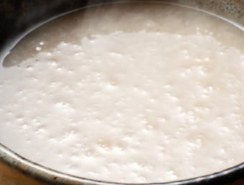0. Intrigued? Give it a try and take a deep dive into the world of fermentation!
Welcome to a clear and concise introduction to Amazake, a traditional Japanese sweet drink made from fermented rice. Since ancient times, Amazake has been associated with good fortune and vitality, often enjoyed during special celebrations for its refreshing taste and numerous health benefits—rich in vitamins, minerals, and enzymes. Despite its long history, many—including Japanese people—find it mysterious, often avoiding it due to its somewhat misleading name and complex history.
Whether you’re a foreign traveler, a business visitor, or a student eager to explore Japan, this experience is for you! If these descriptions spark your curiosity, why not witness this extraordinary world in person? We, as local guides, are excited to welcome you!
1. Does This Intrigue You?
For those unfamiliar with traditional Japanese drinks, I’ve prepared a brief introduction to one of the most mysterious worlds of fermentation. If this fascinates you, come and experience the magical flavor, aroma, and texture of Amazake for yourself!
1 Is Amazake a Non-Alcoholic Beverage?

- Amazake is a traditional Japanese sweet drink made from fermented rice, known for its creamy texture and naturally sweet flavor, making it a popular non-alcoholic beverage. However, be careful, as some versions can contain a small amount of alcohol.
2 A Perfect Blend of History and Nutrition?
- Since ancient Japan, Amazake has been associated with good fortune and vitality, often consumed during special celebrations due to its refreshing taste and health benefits, being rich in vitamins, minerals, and enzymes.
3 A Revitalizing Infusion to Combat Travel Fatigue?
- Amazake is rich in glucose, the same ingredient used in intravenous drips in hospitals, earning it the nickname ‘drinkable drip.’ It can help relieve fatigue during your stay in Japan.
2.Do the following messages convince you?
If the previous section didn’t capture your interest, fear not! I’ve delved deeper into each theme. If any of these messages intrigue you, please give it a try again!
2.1 Architecture and Craftsmanship
👉Feel Like a Sake Artisan by Making Amazake at Home?
- There are two types of amazake: one made from rice malt, which is also used for miso and soy sauce, and another made from sake kasu, the pressed leftover bits from sake production. The former can be made at home using a rice cooker or pressure cooker, giving you the feeling of being a petit artisan.
2.2 Fashion
👉Amazake: The Drinkable Skin Cream?
- Amazake is rich in B vitamins, which promote skin metabolism and support healthy skin, nails, and hair. It also has a high detoxifying effect, helping to prevent blotches, dullness, and rough skin by smoothly eliminating waste products.
2.3 Art
👉Can You Experience the Taste of a Mythical Drink?
- Amazake appears in a variety of settings, from ancient Japanese mythological texts to modern web novels. If you drink amazake while reading these stories, you might find its delicious taste even more artistic.
2.4 Food
👉Beware of Amazake—Vegan and Gluten-Free, But Temptingly Sweet!
- Rice koji amazake is made with just koji, water, and rice, making it gluten-free and perfect for vegans. But be careful—its naturally sweet taste can be addictive, so it’s best to enjoy just one glass a day, whether you’re vegan, gluten-free, or not.
2.5 The Japanese
👉If It’s Not Always Sweet, Why the Sweet Name?
- Amazake is a somewhat misleading name, as it literally translates to ‘sweet alcohol.’ In reality, there are two types: one that isn’t sweet and contains alcohol, and another that is sweet but alcohol-free. So, why haven’t the detail-oriented Japanese revised this ancient name? Perhaps they were simply intoxicated by the sweet sound of the word ‘amazake.’
Thank you & Afterwards
Thank you very much for reading to the end of this issue. If you have any comments or requests, please feel free to contact us at the Help Desk.🔶Gold🔶R70429.v.4b.4b.1b/+


